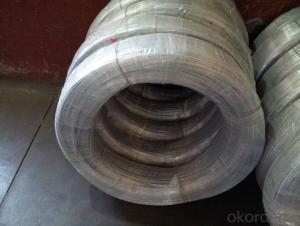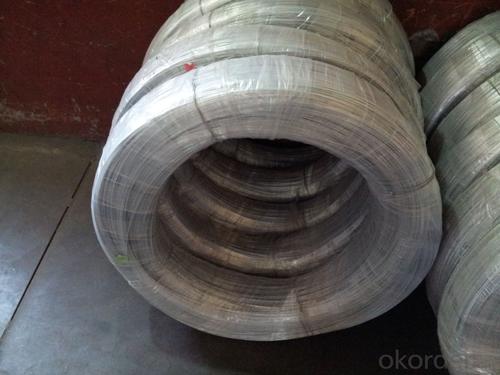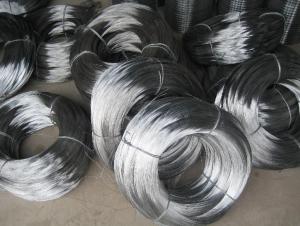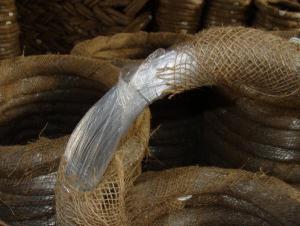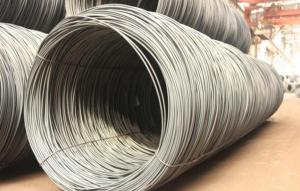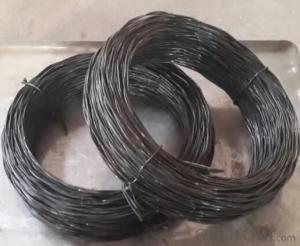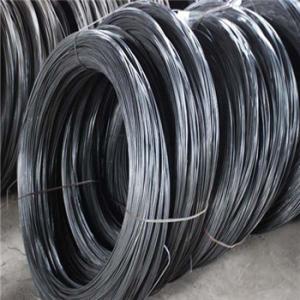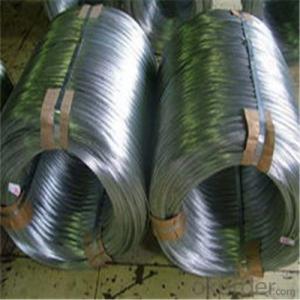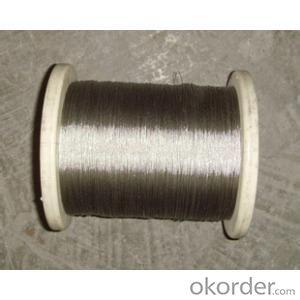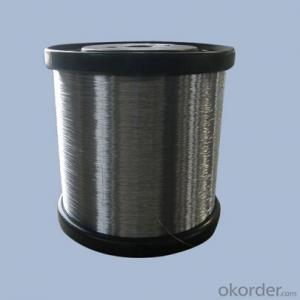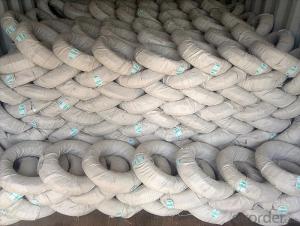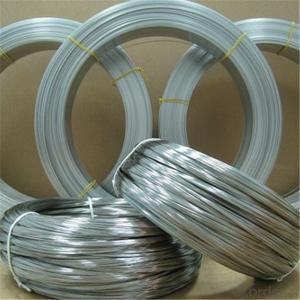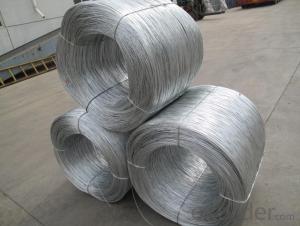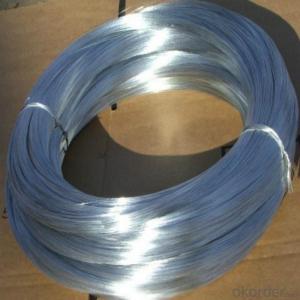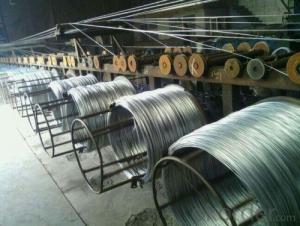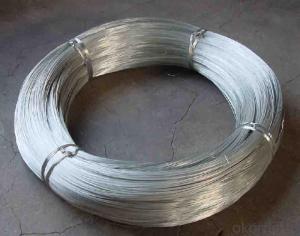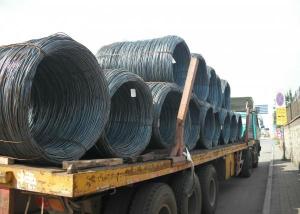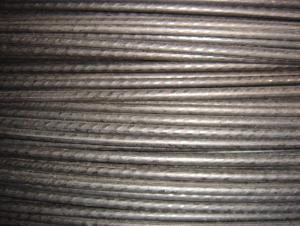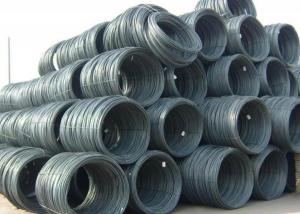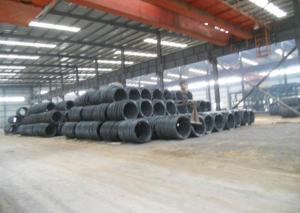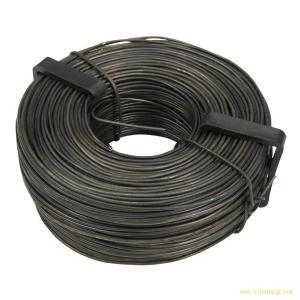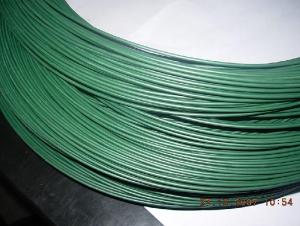Galvanized Wire For Chain Link Fence
- Loading Port:
- China Main Port
- Payment Terms:
- TT OR LC
- Min Order Qty:
- -
- Supply Capability:
- -
OKorder Service Pledge
OKorder Financial Service
You Might Also Like
Commercial Galvanised Steel Wire
(1) Quality : Meet GB/T 343 standard and other requirements of relevant standards .
(2) Zinc Coating: Meet GB/T 15393 standard and other requirements of relevant standards .
(3) Raw Material : Wire rod ——1006 , 1008 , 1018 , Q195 , etc, and zinc with 99.995% purity.
(4) Tensile Strength Range
Size (mm) | Tensile Strength (mpa) |
0.15-1.60 | 290-550 |
0.65-1.60 | 400-550 |
1.61-6.00 | 400-1200 |
(5) Application : Used in wire mesh , artware , metal hose , binding for agriculture and construction , etc.
(6) Packing
Size (mm) | Coil Size | Spool Packing | Big Coil Packing | |
ID (mm) | OD (mm) | |||
0.15-0.26 | 6 inch | 1-14kg/spool |
|
|
0.27-0.60 | 8 inch | 1-100kg/spool |
|
|
0.61-1.60 | 12/14/16 inch | 1-100kg/spool | 250-400 | 400-770 |
1.61-6.00 |
| 14-500kg/spool | 450 | 800 |
508 | 840 | |||
(7) Zinc Coating
Meet GB/T 15393 standard.
Size (mm) | Weight of Zinc-Coating ( g/m2 ) | |||||||
A | AB | B | C | D | E | F | ||
A1 | B2 |
|
|
|
|
|
| |
≤0.25 |
|
| 30 | 20 | 18 |
|
|
|
>0.25-0.40 |
|
|
| 30 | 25 | 20 |
|
|
>0.40-0.50 |
|
|
|
| 30 | 20 |
|
|
>0.50-0.60 |
|
|
|
| 35 | 20 |
|
|
>0.60-0.80 | 120 | 110 |
|
| 40 | 20 |
|
|
>0.80-1.00 | 150 | 130 |
|
| 45 | 25 |
|
|
>1.00-1.20 | 180 | 150 |
|
| 50 | 25 |
|
|
>1.20-1.40 | 200 | 160 |
|
| 50 | 25 |
|
|
>1.40-1.60 | 220 | 180 |
|
| 50 | 35 | 30 |
|
>1.60-1.80 | 220 | 180 |
|
| 70 | 40 | 30 |
|
>1.80-2.20 | 230 | 200 |
|
| 80 | 50 | 40 |
|
>2.20-2.50 | 240 | 210 |
|
| 80 | 55 | 40 |
|
>2.50-3.00 | 250 | 230 |
|
| 90 | 70 | 45 |
|
>3.00-4.00 | 270 | 250 |
|
| 100 | 85 | 60 | 30 |
>4.00-5.20 | 290 | 270 |
|
| 110 | 95 | 70 | 40 |
>5.20-6.00 | 290 | 270 | 245 |
| 110 | 100 | 80 | 50 |
- Q: Basically I have a 3000watt amp, and I need to buy the right wires. Would I still manage to get the full power out of the amplifier with 1000w speaker wiring kit or do I need to buy a 3000w speaker wiring kit?If so, where is the difference with the higher wattage wiring kits.Thanks
- Wire okorder with free shipping Goodluck
- Q: 4.A uniform semicircular sign 1.00 m in diameter and a weight of 325 N is supported by two wires. What is the tension in each of wires supporting the sign?
- the sum of the tension of both wires must add up to 325N if both wires are equal distance from the center of sign then the tension on each wire is 325/2=162.5 if the wires are at different distances you need to the distances to get the answer
- Q: DO i TWIST THE WHITE AND RED SMALL WIRES TOGETHER UNDER THE WIRE NUTS ON AC WIRING TO THE CONDENSER?
- Do you have two whites and two reds? If so connect the whites together, and connect the reds together.
- Q: We added an AC to a preexisting sx 80 furnace and we are having a hard time wiring the new thermostat to the furnace, and the condensor to the furnace. Anyone know how to get a wiring diagram?? thanks
- furnace will have 5 low voltage terminals,,R,,Y,,G,,W,,C...you have to connect R,,Y,,G,,and W at the furnace to R,Y,G,and W at the thermostat...so you have to use at least 4-conducter tstat wire between the tstat and furnace...typically you would use the red wire to connect the R terminals at tstat and furnace,,green wire for G terminals,,yellow wire for Y terminals and white wire for W terminals.. if your tstat wire doesnt have those exact colors it doesnt matter,,just be sure that the wires connected to R,Y,G,and W at the tstat are connected to R,Y,G,and W at the furnace respectively...if your tstat is programmable and requires a common wire to operate,,then you will need a 5 conducter tstat wire between tstat and furnace...the fifth wire, whatever its color,will need to connect the C terminal at the furnace to the common wire terminal at the tstat,,usually the common terminal at tstat is labeled C but not always.....as far as the outdoor unit goes..you will need at least a 2 conducter tstat wire to connect the Y and C terminals at the furnace to Y and C wires or terminals in the outside unit,,usually 24 volt polarity doesnt matter at the outdoor unit,,in other words as long as the 2 wires outside that are connected to the Y and C terminals in the furnace are connected to the [low voltage] 2 wires / terminals it will work,,unless one of the wires / terminals outside is clearly labeled as common.in that case make sure whatever tstat wire is connected to that wire / terminal is connected to C back at the furnace.....so at the furnace there will be one wire [red] connected to R....2 wires connected to Y. [ one going to Y at tstat,the other going to outdoor unit]...one wire [green] connected to G. and one wire [white] connected to W.....and one wire [common,usually blue] connected to C unless tstat requires a common wire,,in that case there will be 2 wires connected to C at the furnace.......hope i made it clear enough.......dan
- Q: I own a 1990 Toyota 4runner 6cyl, 3L. it had a few performance issues when i bought it. ( just didnt seem to have any power idling at around 200), so before spending money on expensive items, i figured spark plugs, wires, cap and rotor. So i just changed the spark plug wires today, and immediatly the truck was runnin much better idling at 800-1000 , about 5 minutes into driving, the problem started again, i parked the truck, it was idling at 200-300 again, opened the hood saw a bit of smoke coming from one of the wires, so im hoping and assuming it was just smoking because the wire was touching a hot surface, i can hear a bit of a clicking noise that i dont remember hearing before, almost like a spark. what could cause the sudden problem, is it possible the wires could be connected to the wrong spark plugs ( i replaced the old ones one by one, so i know i didnt connect it wrong) any tips would be great
- The wire burned on something hot and is arcing to ground. Replace it and use a wire loom to stand it away from the problem surface. That clicking sound is the arc.
- Q: I removed the thermostat before marking the wires and I need to know if anyone knows which wires go where?
- Hello Kaitlin: It depends on what wires come from the furnace. You will need to go to the furnace and look at the wires. If it is a gas furnace (with air cond.), there should be a R terminal with a red wire attached this is the power line. The W terminal (heat) has a white wire attached. The G terminal (fan) should have a green wire. The C (common) terminal may have a blue or black wire (or not). The Y (cooling) terminal may have a yellow wire. If it is a heat pump, the wires will be R (power), Y (compressor), O or B (reversing valve), G (fan), C (common), the backup heat has different designations, from W2 to Aux, others. There should be a legend on the furnace to assist. Good luck.
- Q: I am getting these 2 CVR 12's 4 ohm dvc and i am wiring them for a 2 ohm load (parallel). When you run a wire from voice coil 1 positive to voice coil 2 positive, then to amp. and the same for negative, what is the wire that is connecting the voice coils? is it a power wire, ground wire, speaker wire? please help!
- I'm not sure I understand what you are asking, but 2 4ohm DVC's can't be wired to 2 ohm, either 4ohm or 1 ohm, but you would need a 1 ohm stable amp to do that. As for the other part of the question, can you clarify?
- Q: I've been asking questions to my mom about what is inside the new receiver and then suddenly i asked my mom, what is inside a wire? She didn't know what was inside a wire so i asked if i can post my question on yahoo answers, and then she said yes so i did it.
- An electrical wire is composed of a copper (sometimes steel, aluminum, or other metal) core, surrounded by a plastic cover to insulate it. The newer fiber optics wires for communications contain a translucent plastic core for transmitting light signals.
- Q: how do i connect ignition wire from fuse box to cd player?
- your wanting to run a wire from your cd player to the fuse box?, ok, take a piece of covered wire, hook it to the hot wire of your cd player, run it down to the fuse that says radio, it should play on accessories and while your driving.
- Q: What's the metal wire fabric?Such as title
- Because the implant metal wire fabric because of the overall color bright, if there is a light metal, can reflect the specific metallic luster. But note that not only the characteristics of metal wire fabric in metallic luster, and anti-static, with anti radiation, more conducive to regulate all aspects of the body
Send your message to us
Galvanized Wire For Chain Link Fence
- Loading Port:
- China Main Port
- Payment Terms:
- TT OR LC
- Min Order Qty:
- -
- Supply Capability:
- -
OKorder Service Pledge
OKorder Financial Service
Similar products
Hot products
Hot Searches
Related keywords
